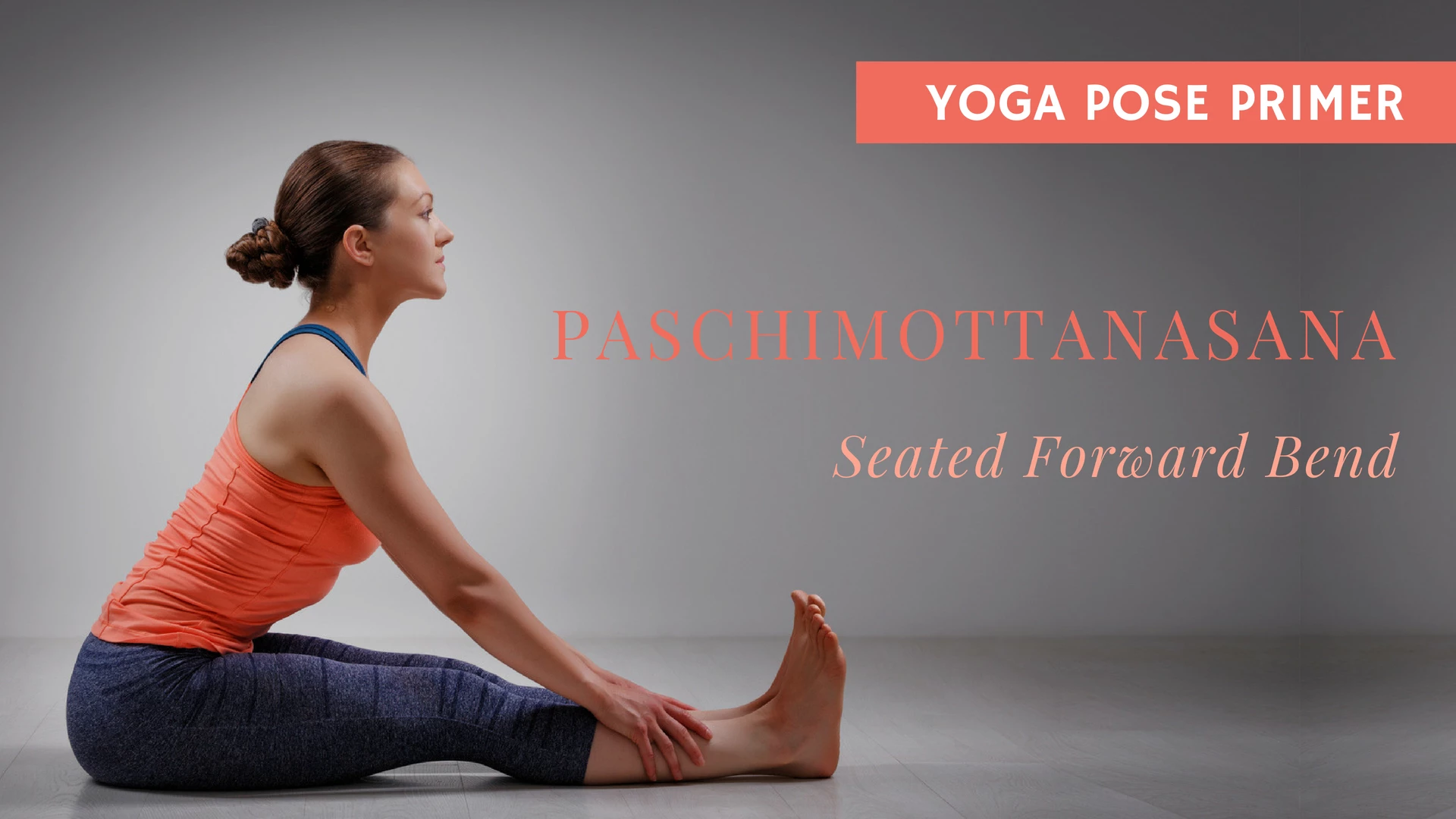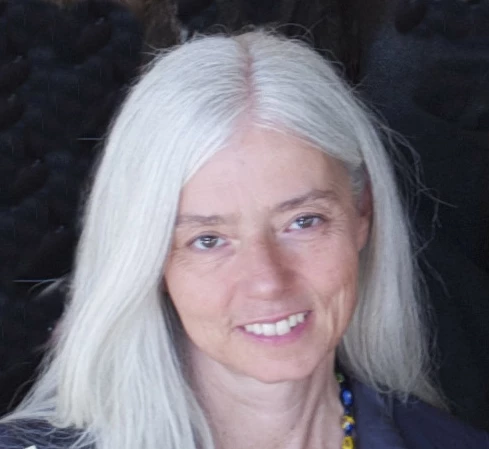Yoga Pose Primer: Paschimottanasana (Seated Forward Bend)

Forward bends are my favorite yoga poses for containing energy. When I sequence a yoga practice or class, forward bends always precede Savasana. Folding your body inward naturally calms your nervous system and smooths the energy you’ve generated in the preceding poses—as long as you approach them with a yin (passive) rather than yang (aggressive) intention.
One of yoga practice’s most ubiquitous forward bends is Paschimottanasana (Seated Forward Bend). On the most superficial level, Paschimottanasana stretches the muscles of the back body at the lower spine, pelvis, and legs. In addition, it stretches muscles in the upper back and those around the kidneys and adrenal glands, making it potentially therapeutic for people suffering from adrenal exhaustion.
While Paschimottanasana is relatively simple and straightforward, for most of us—myself included—it is not an easy pose. Because it requires patience, it also teaches patience. Because it is challenging, it teaches humility. When we can truly surrender into our present manifestation of this pose, regardless of whether our head is anywhere near our knee, we discover deep inner focus and peace.
How to Practice Paschimottanasana (Seated Forward Bend)

- Sit on a mat or blanket with your legs stretched out in front of you. Have an extra firm blanket or two handy. You may also find a strap useful.
- Now, feel your lower spine with your fingers. Is your lower spine bowing outward so that you can feel the knobby spinous processes? If so, fold one of your extra blankets and place it under your pelvis to tilt your spine forward. Check your spine again, and add another blanket if necessary.
- Bend both knees, draw them up, and fold your forearms under them. On an exhalation, slide your feet forward and bend your torso forward from the pelvis so that your pelvis and back move together.
- With your knees still bent, rest your torso on your legs. Don’t worry about how much your knees are bent. Take a few deep breaths in this position, expanding your whole back body with your inhalations.
- As you exhale, let go of resistance in the shoulders, neck, and head. It is important to remember that surrendering into a pose means that you relax into the pose you are currently in, whether or not that surrender brings your head closer to your knees.
- Feel free to stay in this position, with your knees bent and your forearms folded under them, for five to ten breaths. Even though I am very flexible, I usually practice this pose with my knees slightly bent these days. Practicing this way places much less stress on the low back and sacroiliac joints.
- If you like, you may slide your forearms out from under your knees and stretch your legs out straight. Reach out and hold your feet, or use a strap to connect your hands to them. Maintain slow, deep, continuous breathing.
- After five to ten breaths, on an inhalation, draw the pelvis and torso back to vertical.
- Be present with whatever sensations are arising. What do you feel? What happened in the forward bend? How did it change you?
There’s nothing miraculous that happens when your head touches your knee. Inner peace happens in the here and now, not somewhere off in the future when your pose is supposedly “better.” Straining to force your head to your knee only creates struggle and dissipates the very energy you are hoping to integrate and store by practicing this forward bend.
As a challenging yoga asana for most, Paschimottanasana makes us aware not only of the limitations of the body but of the ebb and flow of thought as we encounter our resistance and attachments to achievement. But it is in this encounter with the truth of our relationship to challenging situations that we realize the most profound benefit of Yoga practice—the choice to relate to challenges with aversion and struggle or to open to challenge with a sense of ease and curiosity. When we struggle against present reality, we deplete our energies; when we open to present reality, we develop patience, resilience, and inner strength.
Another Yoga Pose Primer from special contributor Charlotte Bell – Dekasana (Airplane Pose).
 Charlotte Bell began practicing yoga in 1982 and began teaching in 1986. She was certified by B.K.S. Iyengar in 1989 following a trip to Pune. In 1986, she began practicing Insight Meditation with her mentors Pujari and Abhilasha Keays. Her asana classes blend mindfulness with physical movement. Charlotte writes a column for Catalyst Magazine and serves as editor for Yoga U Online. She is the author of two books: Mindful Yoga, Mindful Life and Yoga for Meditators, both published by Rodmell Press. She also edits the Hugger Mugger Yoga Products¹ blog and is a founding board member for GreenTREE Yoga, a non-profit that brings yoga to underserved populations. A lifelong musician, she plays oboe and English horn in the Salt Lake Symphony and the folk sextet Red Rock Rondo, whose 2010 PBS music special won two Emmys.
Charlotte Bell began practicing yoga in 1982 and began teaching in 1986. She was certified by B.K.S. Iyengar in 1989 following a trip to Pune. In 1986, she began practicing Insight Meditation with her mentors Pujari and Abhilasha Keays. Her asana classes blend mindfulness with physical movement. Charlotte writes a column for Catalyst Magazine and serves as editor for Yoga U Online. She is the author of two books: Mindful Yoga, Mindful Life and Yoga for Meditators, both published by Rodmell Press. She also edits the Hugger Mugger Yoga Products¹ blog and is a founding board member for GreenTREE Yoga, a non-profit that brings yoga to underserved populations. A lifelong musician, she plays oboe and English horn in the Salt Lake Symphony and the folk sextet Red Rock Rondo, whose 2010 PBS music special won two Emmys.



